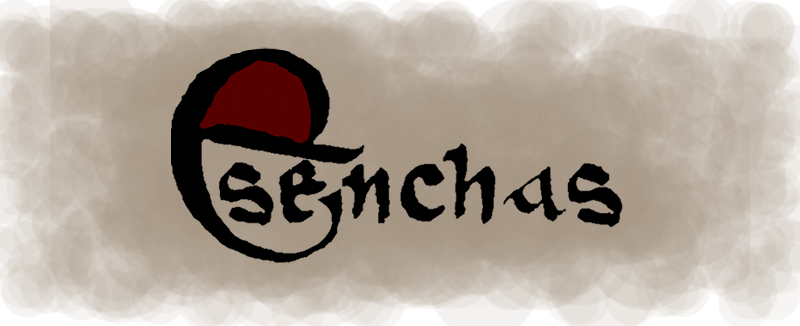
This is the third of four tales concerning Mongán mac Fiachnai preserved as a group in the manuscript Lebor na hUidre ‘The Book of the Dun Cow’. It is Old Irish in date and may have been composed in the eighth century. Mongán himself is said to have died in 625, according to his obituary notice in the Annals of Ulster, in which his father Fiachnae is associated with Lurga (Co. Monaghan).The tradition that he was killed by a stone if found in other annalistic compilations, including the Annals of Tigernach. Genealogical material associates him with the northern territory of Dál nAraidi and Dál Fiatach and records the names of a number of his sons. There is reference to a wife of his, Dub Lacha, in the genealogies and in the Banshenchas ‘Lore of Women’. She also features in a later literary tale, Serc Duibe Lacha do Mongán ‘Mongán’s Love for Dub Lacha’ (or ‘Dub Lacha’s Love for Mongán’).
Mongán’s character is developed in this tale, and in others associated with it. This story tells of his relationship with a student poet who journeys to a number of Otherworld locations on Mongán’s behalf, returning with a precious stone from Lethet Oidni, as requested by Mongán, and bringing with him, as instructed, silver for himself. This tale highlights Mongán’s superior relationship to poets, a theme also developed in Scél asa mberar combad hé Find mac Cumaill Mongán and in other Mongán tales. His significant connections with the Otherworld are also emphasised throughout.
Four tales concerning Mongán – Compert Mongáin ‘The Birth-tale of Mongán’, Scél asa mberar combad hé Find mac Cumaill Mongán ‘A Story from which it is inferred that Mongán was Finn mac Cumaill’, Scél Mongáin ‘A Story of Mongán’, and Tucait Baile Mongáin ‘The Cause of Mongán’s Vision’ – are attested, in this order, in the following manuscripts: Lebor na hUidre (Dublin, Royal Irish Academy 23.E.25); the Yellow Book of Lecan (Dublin, Trinity College 1318; H.2.16); Dublin, Trinity College Dublin 1363 (H.4.22); and Dublin, Royal Irish Academy 23.N.10. Scél Mongáin is also attested in Dublin, Trinity College 1337 (H.3.18), where it appears alongside Compert Mongáin, and Dublin, National Library of Ireland, G7, where it appears alongside Scél asa mberar combad hé Find mac Cumaill Mongán and Tucait Baile Mongáin. This and the other Mongán tales are likely to have been part of an earlier (now-lost) vernacular manuscript, Cín Dromma Snechtai ‘The Book of Drumsnat’.
The edited text provided here is based on the diplomatic edition of Lebor na hUidre produced by R. I. Best and Osborn Bergin (Dublin, 1929), p. 336, to which the line numbers refer. The translation is taken from The Voyage of Bran, ed. and transl. Kuno Meyer (London, 1895), pp. 54–6.